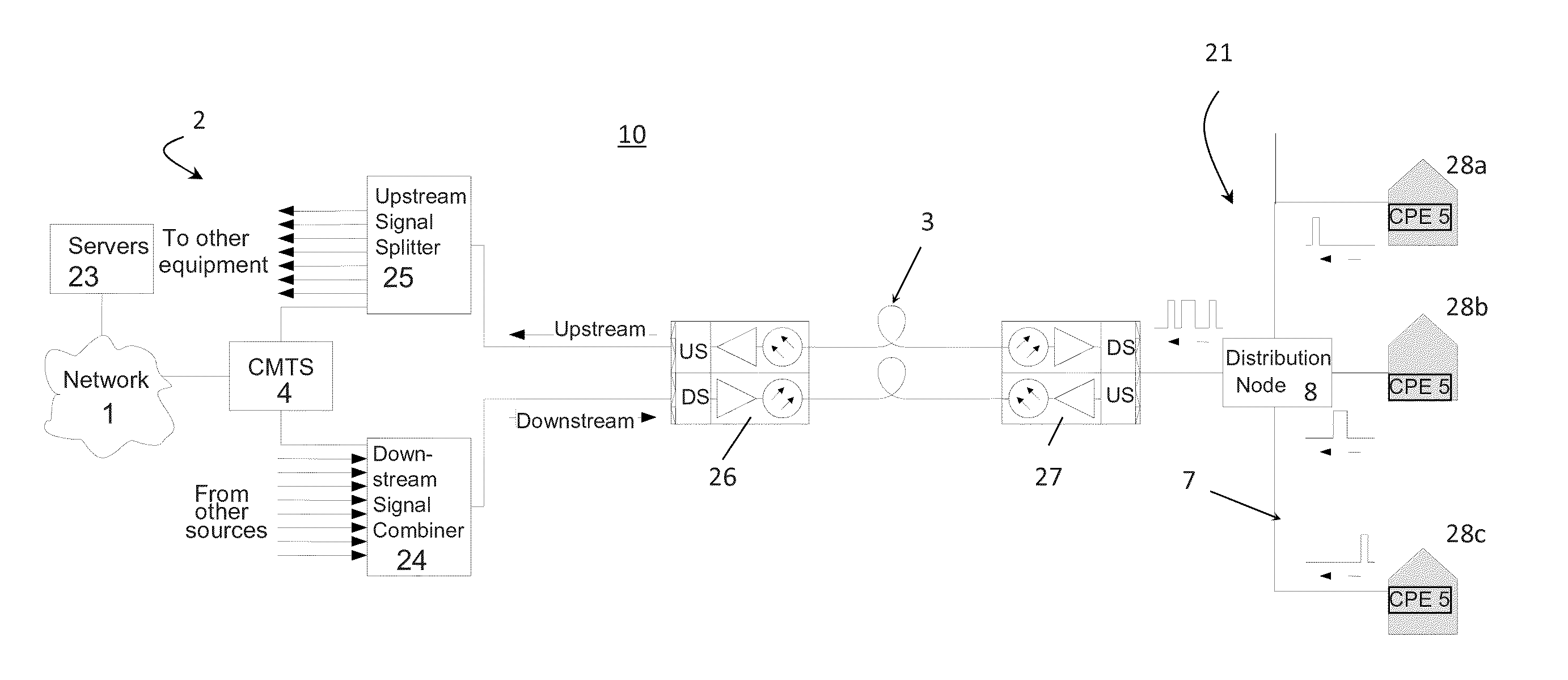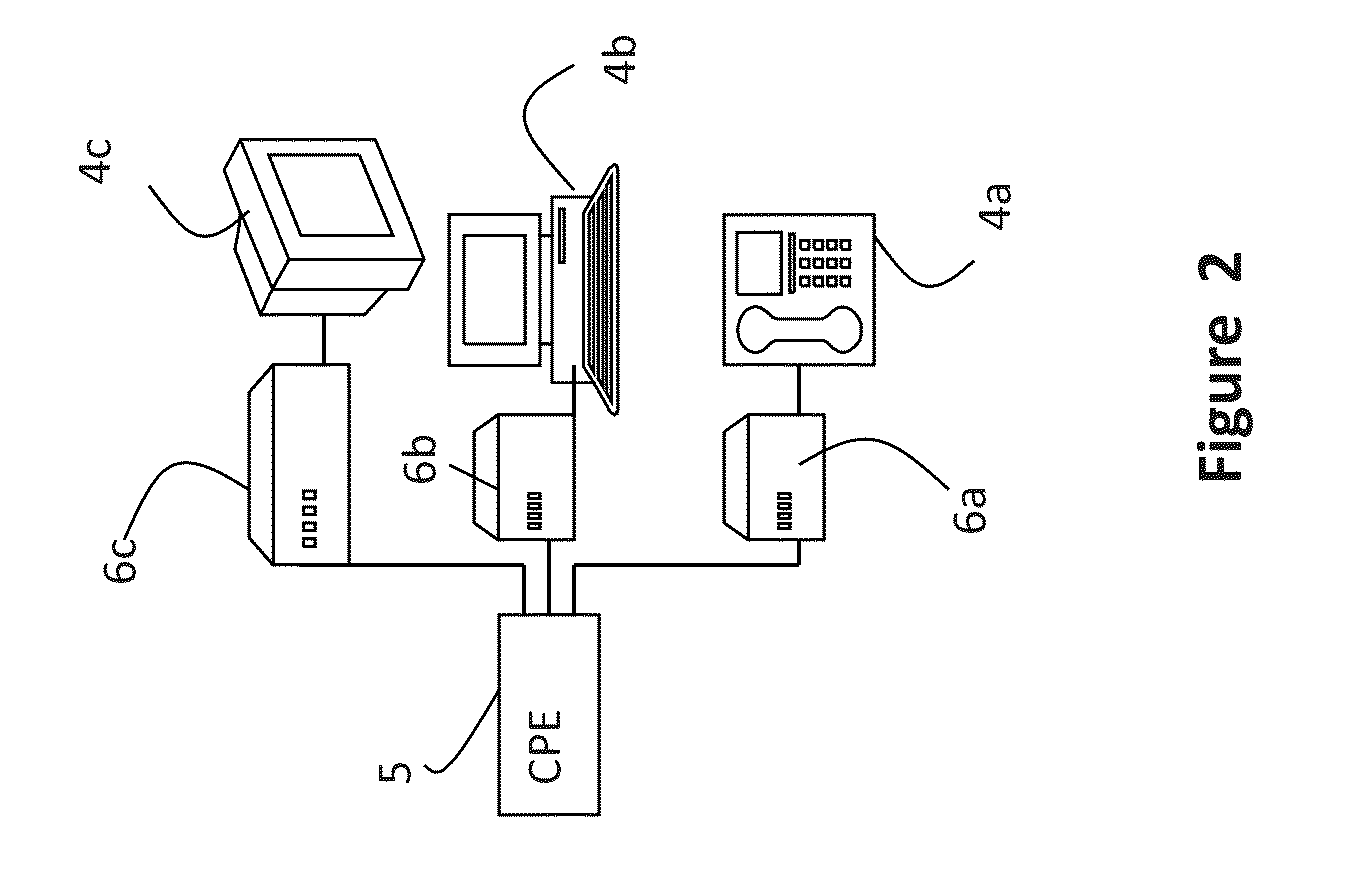Method and system for locating ingress utilizing customer premises equipment
- Summary
- Abstract
- Description
- Claims
- Application Information
AI Technical Summary
Benefits of technology
Problems solved by technology
Method used
Image
Examples
Embodiment Construction
[0028]As discussed above, conventional methods and systems for locating ingress noise in the upstream path generally use only results from monitoring ingress noise in the upstream path. In fact, it is widely accepted that noise in the upstream and downstream paths should be addressed and / or monitored separately. For example, noise in the upstream path is often addressed by finding an ingress source and fixing it using the very time-consuming trial and error processes discussed above. In contrast, noise in the downstream path is typically addressed using noise correction. There are many robust mechanisms for noise correction, including methods such as automatic gain control (AGC), forward error correction (FEC), and equalization, each of which is often used to mask the effect of noise on the downstream channels, rather than for finding the source and fixing it. For example, if the noise is constant, one approach to noise correction in the downstream communication path is to use the e...
PUM
 Login to View More
Login to View More Abstract
Description
Claims
Application Information
 Login to View More
Login to View More - R&D
- Intellectual Property
- Life Sciences
- Materials
- Tech Scout
- Unparalleled Data Quality
- Higher Quality Content
- 60% Fewer Hallucinations
Browse by: Latest US Patents, China's latest patents, Technical Efficacy Thesaurus, Application Domain, Technology Topic, Popular Technical Reports.
© 2025 PatSnap. All rights reserved.Legal|Privacy policy|Modern Slavery Act Transparency Statement|Sitemap|About US| Contact US: help@patsnap.com



